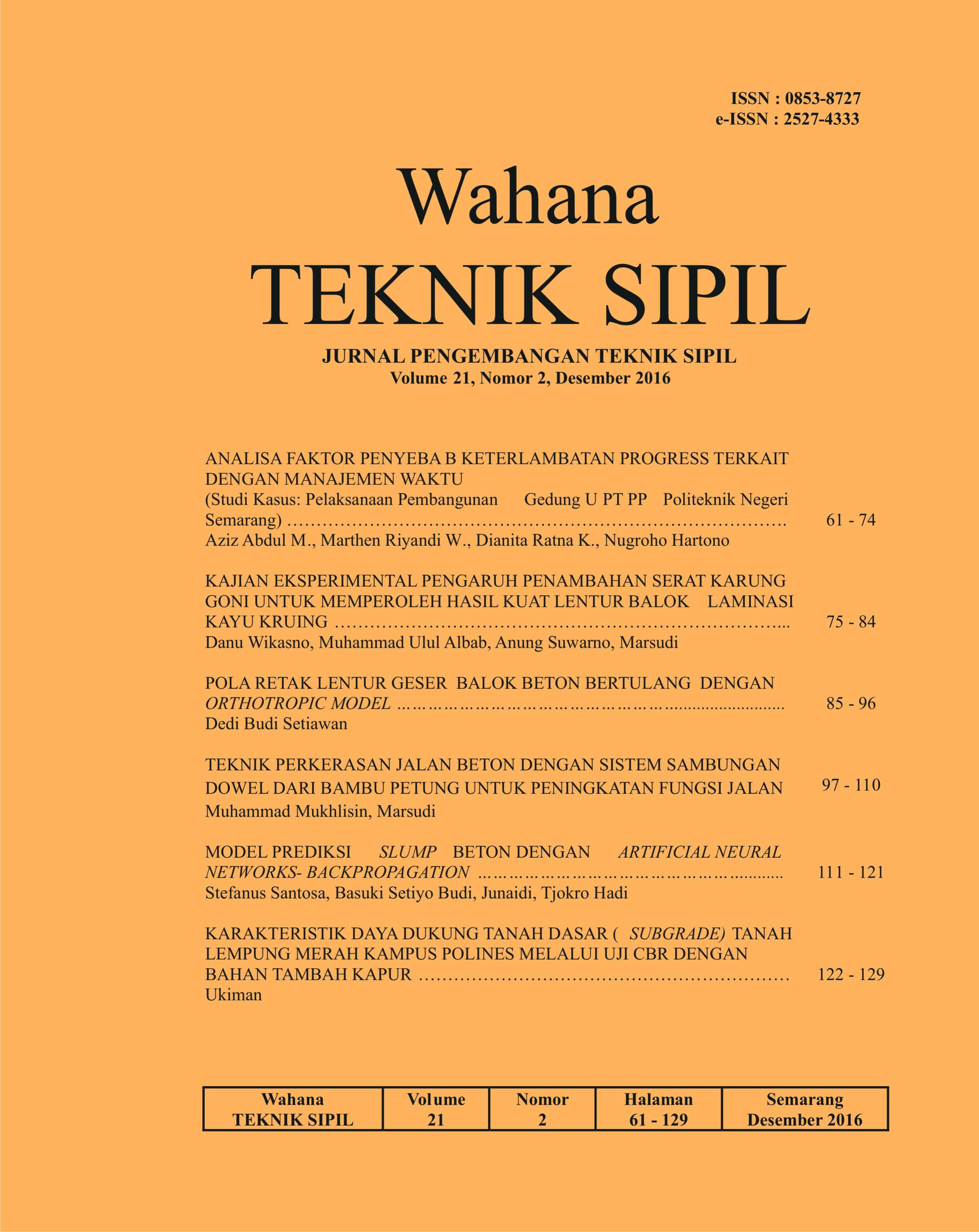KARAKTERISTIK DAYA DUKUNG TANAH DASAR (SUBGRADE) TANAH LEMPUNG MERAH KAMPUS POLINES MELALUI UJI CBR DENGAN BAHAN TAMBAH KAPUR
DOI:
https://doi.org/10.32497/wahanats.v21i02.836Abstract
The influence of water on the soil material will increase the amount of water content in the soil is often called the soil water content. In the fine-grained soil such as clay, water damage will cause the granules swell (swelling), and at a low water content (dry) material clay will shrink. Additionally clay material has a carrying capacity that is small or low, so that in the process of quality improvement as the carrying capacity of the subgrade sometimes do additional material as a binder or hardening larger granules as filler so that the grains become a better arrangement. One of the filler material can be extinguished lime is added with a diverse mix variations and compacted and tested the value of its carrying capacity by CBR testing in the laboratory. Laboratory CBR value is used to guide the process of backfill soil in the field, so that the construction requirements of subgrade (subgrade) can meet the requirements. A large increase in the value of the red clay soil CBR plus lime obtained an increase,with a mixture of about 16% the value of the CBR rose to 25% of the original soil.
Kata kunci : Red clay, lime, CBR carrying capacity.
Downloads
Published
Issue
Section
License
Authors who publish with this journal agree to the following terms:Authors retain copyright and grant the journal right of first publication with the work simultaneously licensed under a Creative Commons Attribution License that allows others to share the work with an acknowledgement of the work's authorship and initial publication in this journal.
Authors are able to enter into separate, additional contractual arrangements for the non-exclusive distribution of the journal's published version of the work (e.g., post it to an institutional repository or publish it in a book), with an acknowledgement of its initial publication in this journal.
Authors are permitted and encouraged to post their work online (e.g., in institutional repositories or on their website) prior to and during the submission process, as it can lead to productive exchanges, as well as earlier and greater citation of published work (See The Effect of Open Access).






